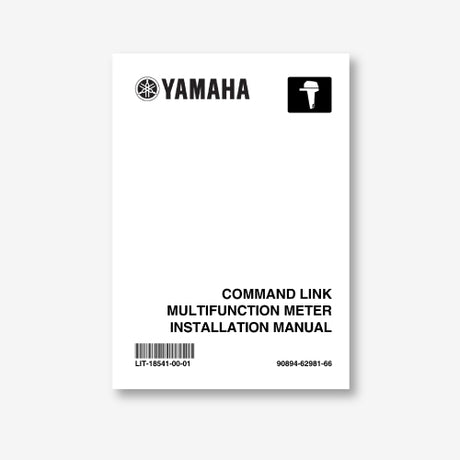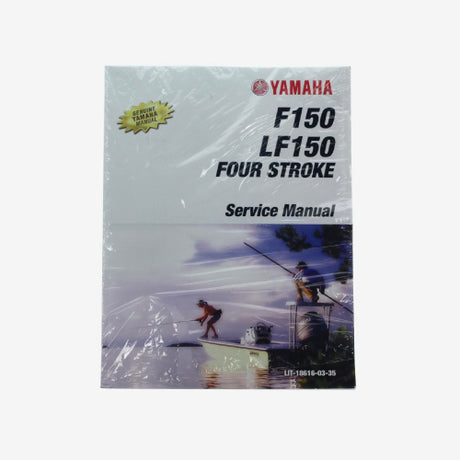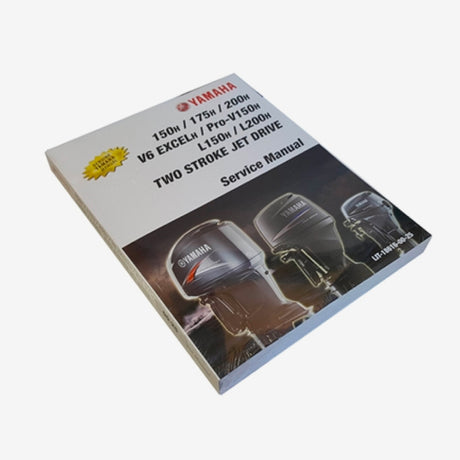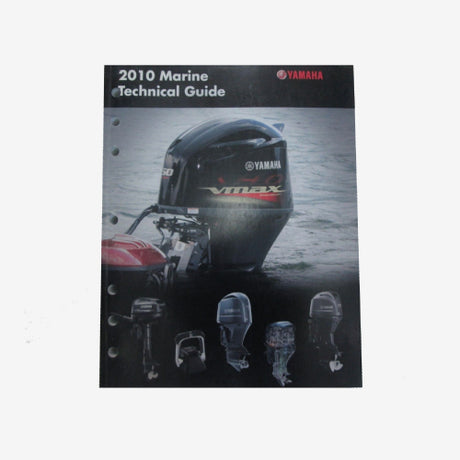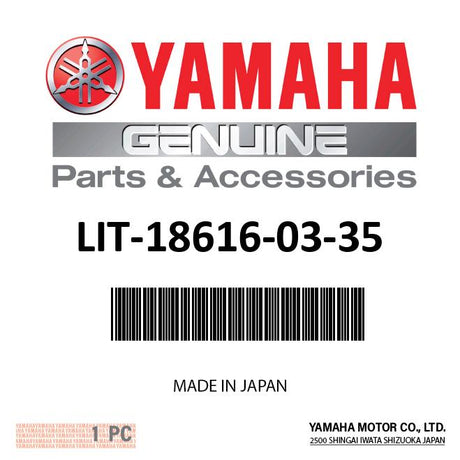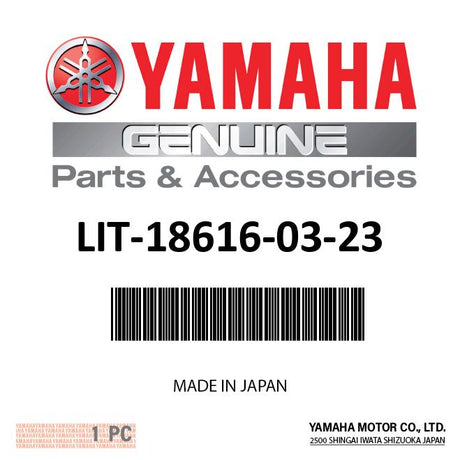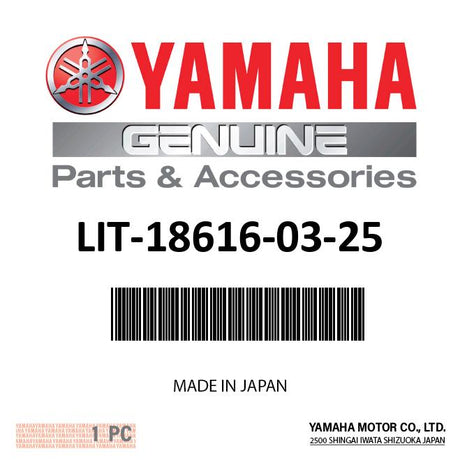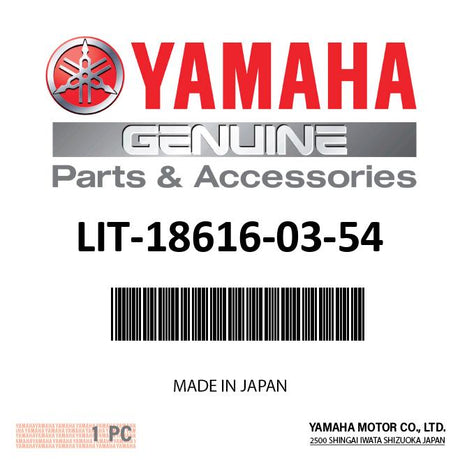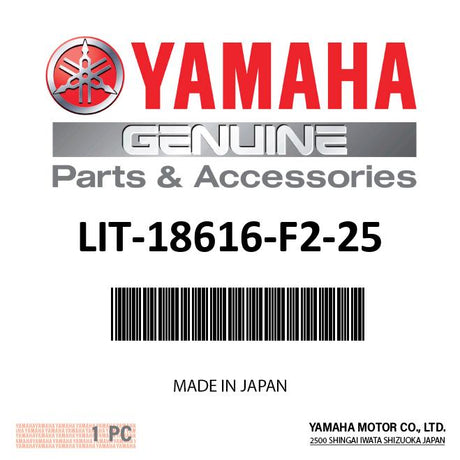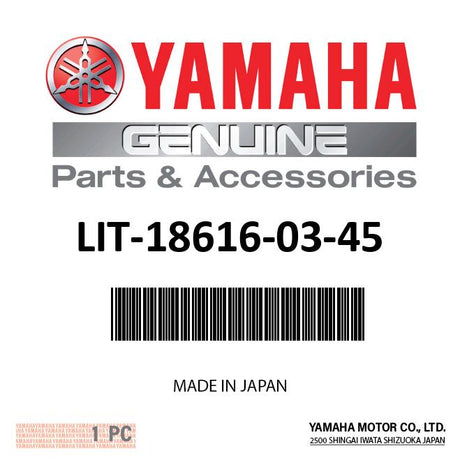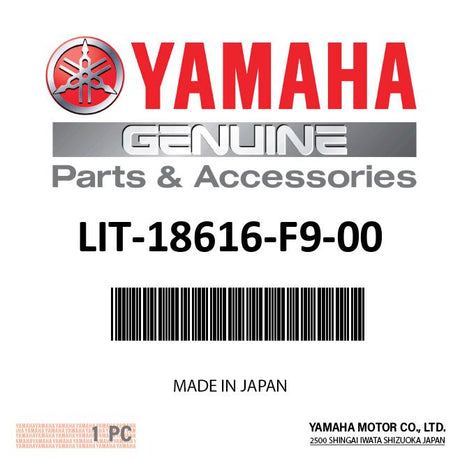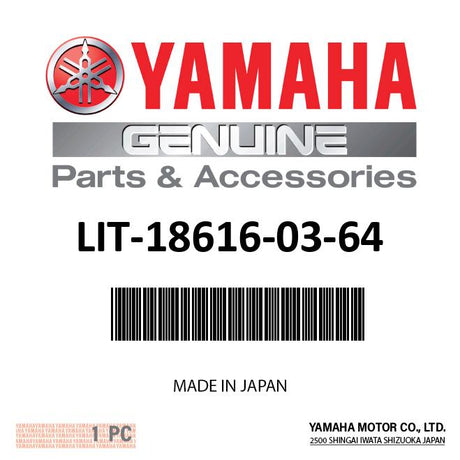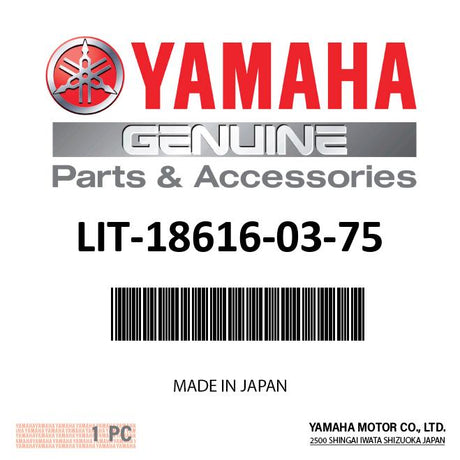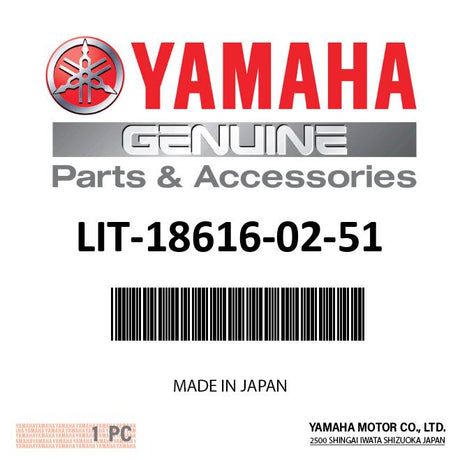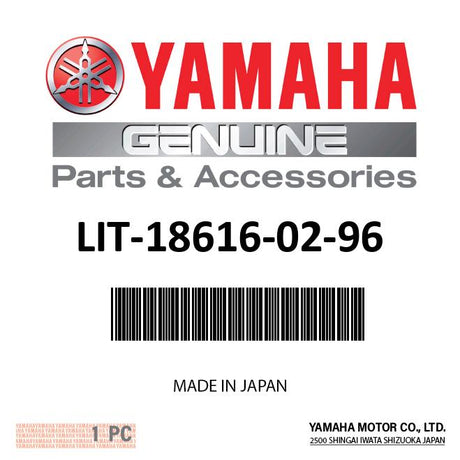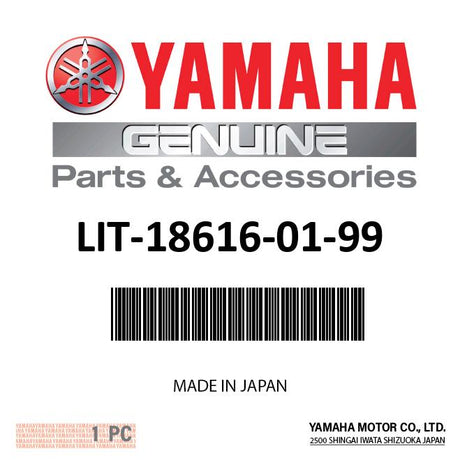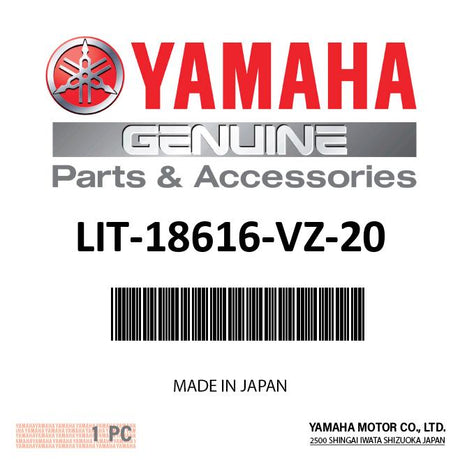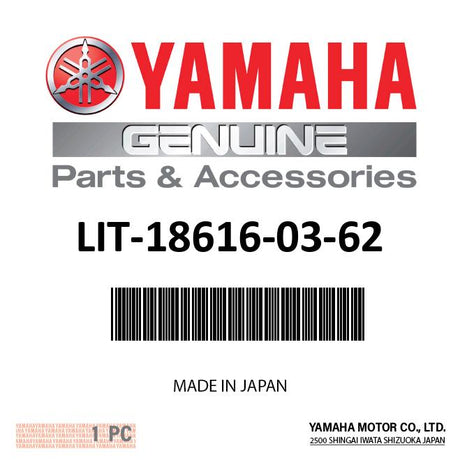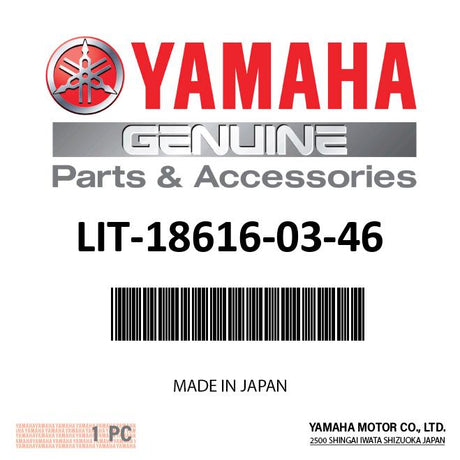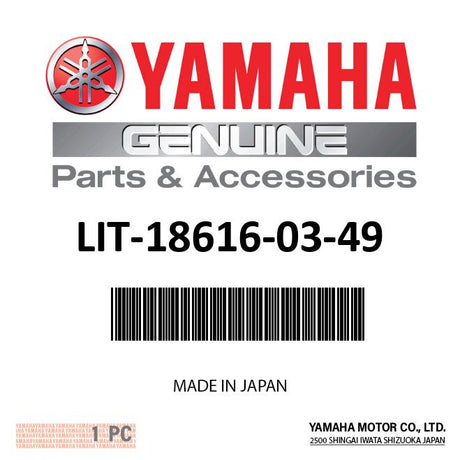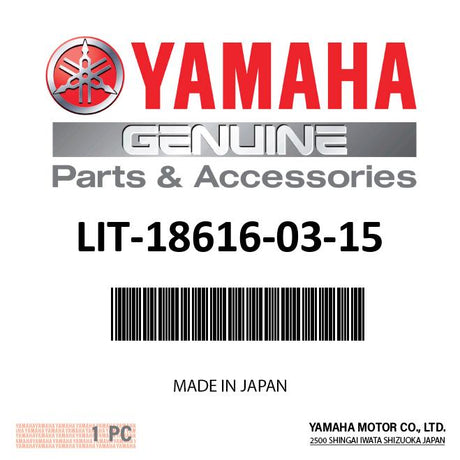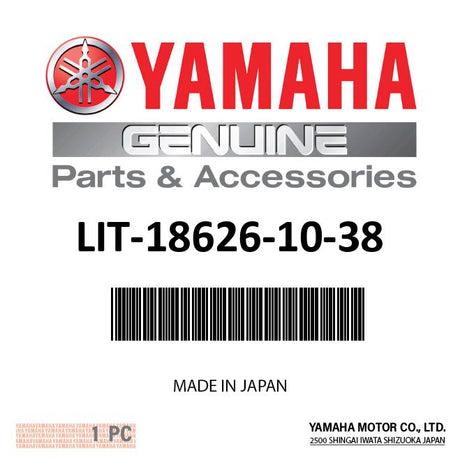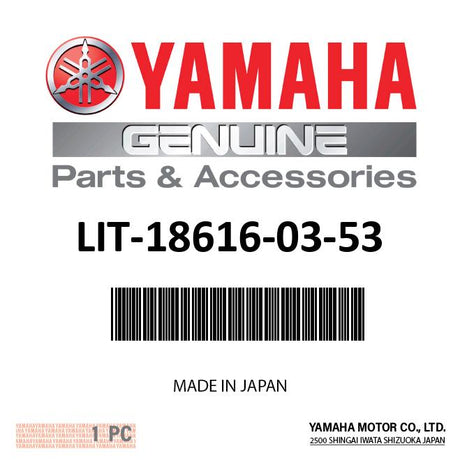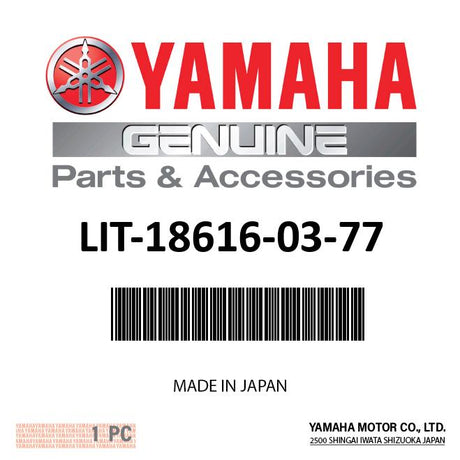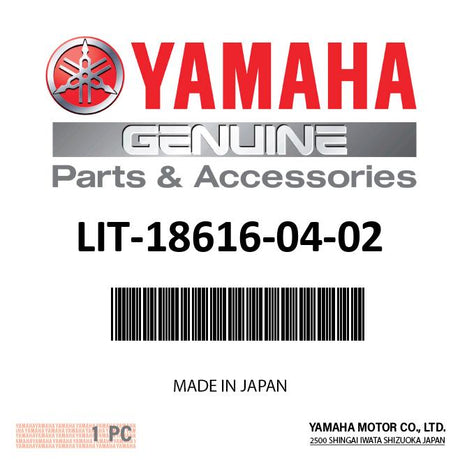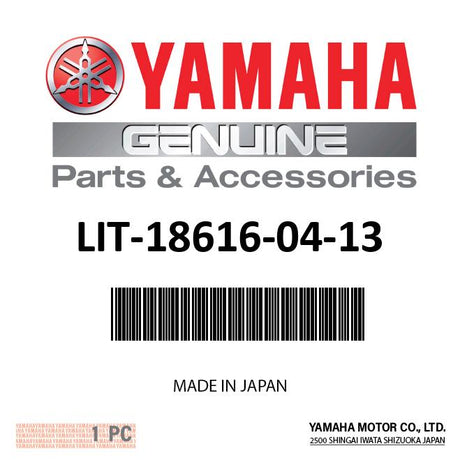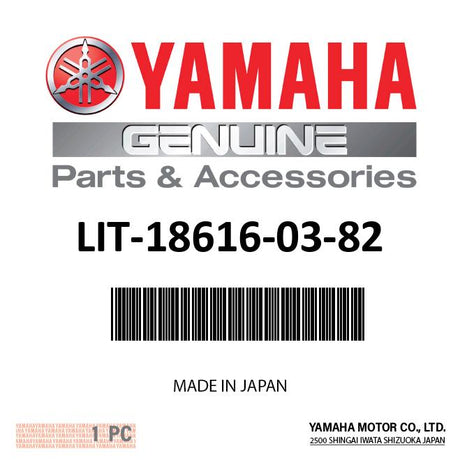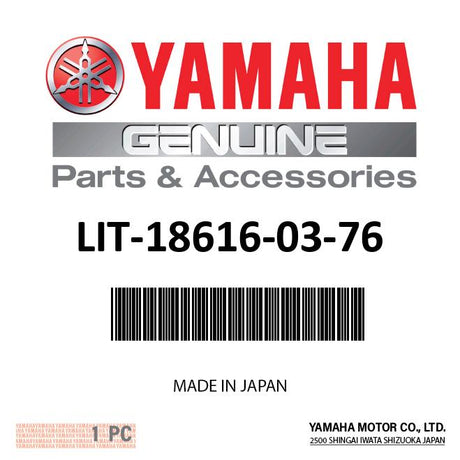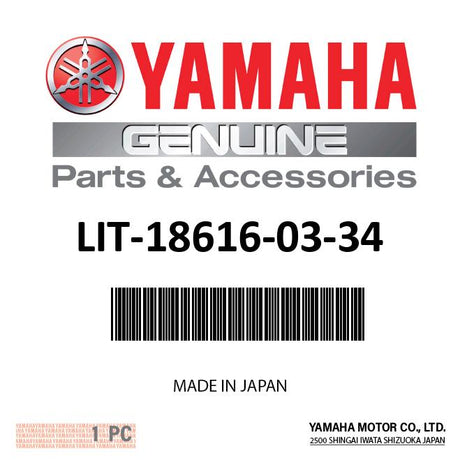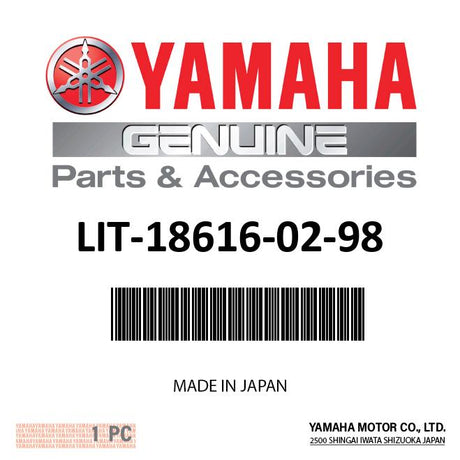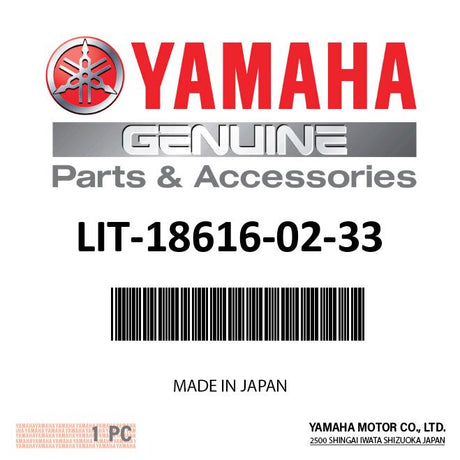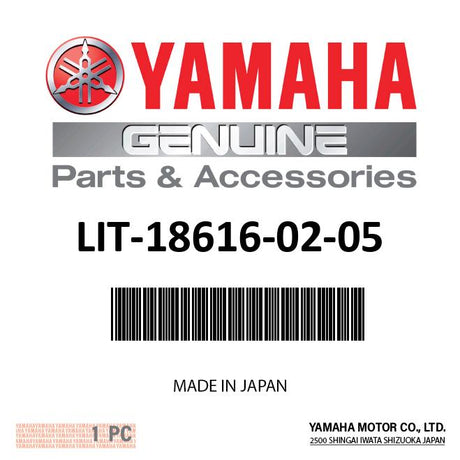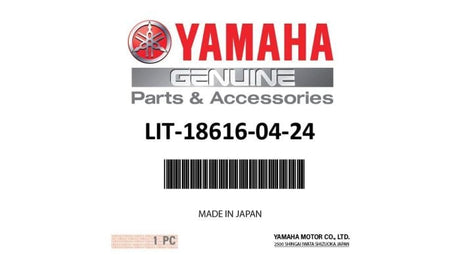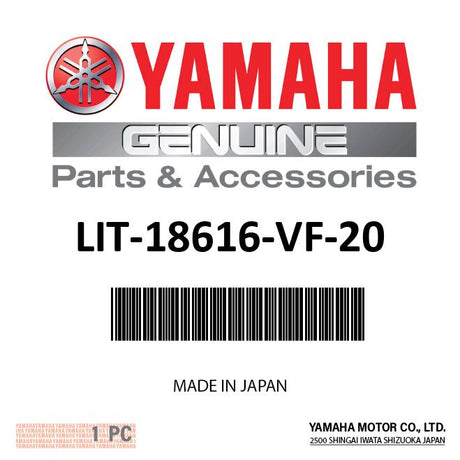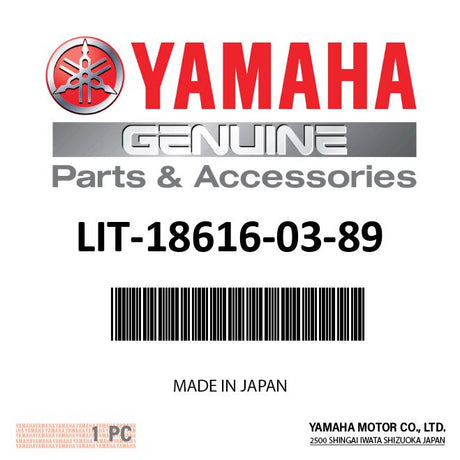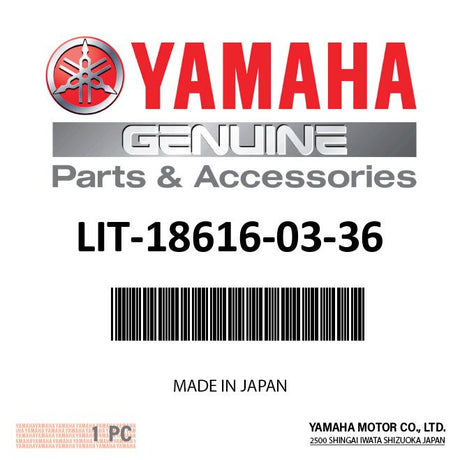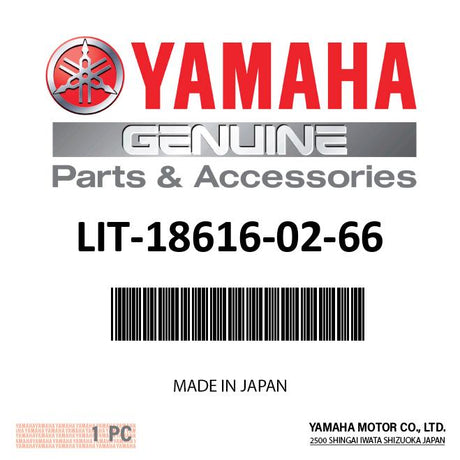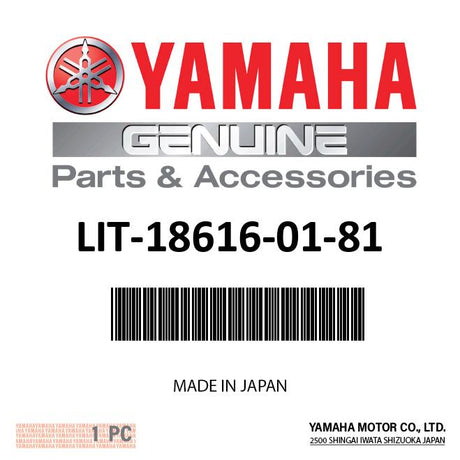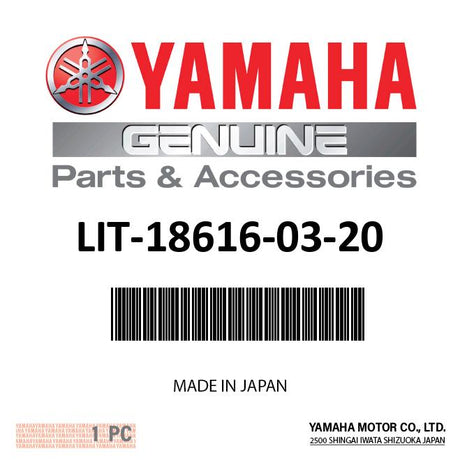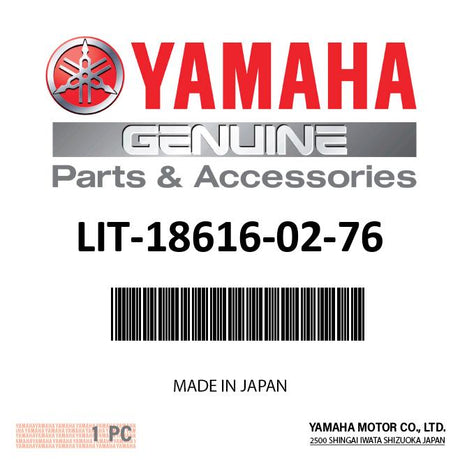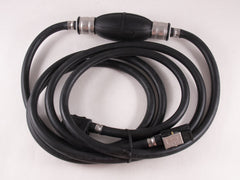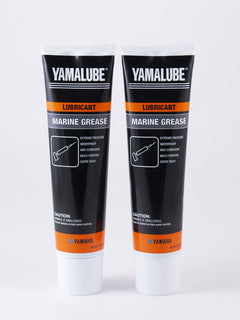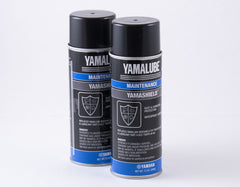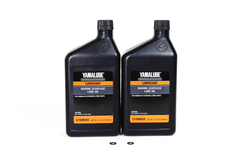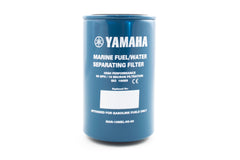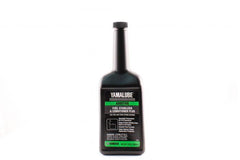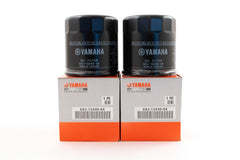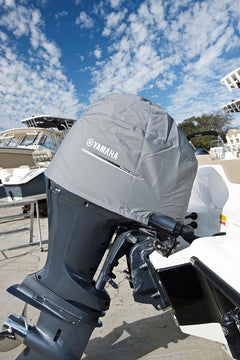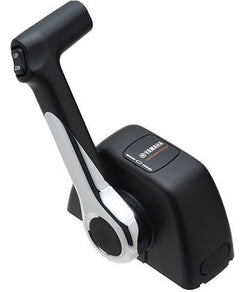Yamaha
$101.12 USDUnit price /UnavailableYamaha
Yamaha LIT-18616-03-23 - Service Manual - F225 F250 F300 LF225 LF250 LF300
$101.12 USDUnit price /UnavailableYamaha
Yamaha LIT-18616-03-54 - Service Manual - F115 F130 2018-2012 (Excluding Jet)
$79.45 USD$90.00 USDUnit price /UnavailableYamaha
Yamaha LIT-18616-F2-25 - Service Manual - F225 F250 F300 LF225 LF250 LF300
$101.12 USDUnit price /UnavailableYamaha
Yamaha LIT-18616-03-45 - Service Manual - F50 F60 T50 T60
$79.45 USD$90.00 USDUnit price /UnavailableYamaha
Yamaha LIT-18616-F9-00 - Service Manual - F75 F90
$79.45 USD$90.00 USDUnit price /UnavailableYamaha
Yamaha LIT-18616-03-64 - Service Manual - VF200 VF225 VF250 F300 V6
$101.12 USDUnit price /UnavailableYamaha
Yamaha LIT-18616-03-75 - Service Manual - F75 F90
$79.45 USD$90.00 USDUnit price /UnavailableYamaha
Yamaha LIT-18616-02-96 - Service Manual - F15 F20
$79.45 USD$90.00 USDUnit price /UnavailableYamaha
Yamaha LIT-18616-01-99 - Service Manual - SX150 LX150 SX200 LX200 V6
$79.45 USD$90.00 USDUnit price /UnavailableYamaha
Yamaha LIT-18616-VZ-20 - Service Manual - VZ200 VZ225 VZ250 V6
$101.12 USDUnit price /UnavailableYamaha
Yamaha LIT-18616-03-62 - Service Manual - F8 F9.9 T9.9
$79.45 USD$90.00 USDUnit price /UnavailableYamaha
Yamaha LIT-18616-03-46 - Service Manual - F8 F9.9 T9.9
$79.45 USD$90.00 USDUnit price /UnavailableYamaha
Yamaha LIT-18616-03-49 - Service Manual - F150 F175 F200
$101.12 USDUnit price /UnavailableYamaha
Yamaha LIT-18616-03-15 - Service manual - F30 F40
$79.45 USD$90.00 USDUnit price /UnavailableYamaha
Yamaha LIT-18626-10-38 - Owners Manual - F115JB F115LB F115XB LF115XB F130
$17.33 USDUnit price /UnavailableYamaha
$101.12 USDUnit price /UnavailableYamaha
$101.12 USDUnit price /UnavailableYamaha
Yamaha LIT-18616-04-02 - Service Manual - VF115 LA/XA
$79.45 USD$90.00 USDUnit price /UnavailableYamaha
Yamaha LIT-18616-03-82 - Service Manual - VF90 F100
$79.45 USD$90.00 USDUnit price /UnavailableYamaha
Yamaha LIT-18616-03-76 - Service Manual - F25C
$79.45 USD$90.00 USDUnit price /UnavailableYamaha
Yamaha LIT-18616-03-34 - Service Manual - F115 LF115
$79.45 USD$90.00 USDUnit price /UnavailableYamaha
Yamaha LIT-18616-02-98 - Service Manual - F115 2010-2007 (Excluding Jet)
$79.45 USD$90.00 USDUnit price /UnavailableYamaha
Yamaha LIT-18616-02-33 - Service Manual - F40 F50 T50 F60
$79.45 USD$90.00 USDUnit price /UnavailableYamaha
Yamaha LIT-18616-02-05 - Service Manual - C60 C70 C75 C80 C90
$79.45 USD$90.00 USDUnit price /UnavailableYamaha
Yamaha LIT-18616-04-24 - F175b/f200c/lf200c service manual
$101.12 USDUnit price /UnavailableYamaha
Yamaha LIT-18616-VF-20 - Service Manual - VF200 VF225 VF250 V6
$101.12 USDUnit price /UnavailableYamaha
Yamaha LIT-18616-03-89 - Outboard Service Manual (MFG 2019-2021) F25C/T25C
$79.45 USD$90.00 USDUnit price /UnavailableYamaha
Yamaha LIT-18616-03-36 - Service Manual - F200 F225 LF200 LF225 LF250
$101.12 USDUnit price /UnavailableYamaha
Yamaha LIT-18616-02-66 - Service Manual - 60C 70C 75 80 90C
$79.45 USD$90.00 USDUnit price /UnavailableYamaha
Yamaha LIT-18616-01-81 - Service Manual - C40 C50
$79.45 USD$90.00 USDUnit price /UnavailableYamaha
Yamaha LIT-18616-03-20 - Service Manual - F4A F5 F6A
$79.45 USD$90.00 USDUnit price /UnavailableYamaha
Yamaha LIT-18616-02-76 - Service Manual - F200 F225 LF200 LF225
$101.12 USDUnit price /Unavailable
Yamaha Service Manuals & Owners Manuals
YamahaOnlineParts.com has a comprehensive range of repair and workshop manuals, parts manuals, and owner's manuals for Yamaha marine outboard motors. Every one of the guides is tailored to a particular Yamaha outboard engine model and features detailed photographs and text. All of the manuals are written in English and specifically designed for outboard models used in the United States.
Whether you're a DIY boater or a certified technician, our Yamaha outboard manuals provide clear, step-by-step instructions with high-quality illustrations and OEM-approved procedures. These manuals are designed to help extend engine life, reduce service costs, and improve performance across all Yamaha outboard models.
We stock a complete range of Yamaha OEM parts and Yamaha outboard manuals, including:
- Yamaha Operational Manuals – covering engines, rigging, and control systems
- Comprehensive Yamaha Outboard Service Manuals
- Official Yamaha Outboard Engine Owners Manuals
- Detailed Yamaha Outboard Technical Guides
Why Use Genuine Yamaha Outboard Manuals
Genuine Yamaha manuals are engineered by the same experts who build your outboard engine. Unlike generic guides or third-party resources, these OEM manuals provide accurate torque specs, wiring diagrams, service schedules, and troubleshooting tips for your exact model. Whether you're winterizing your engine or rebuilding the lower unit, OEM documentation ensures you get the job done right—saving time, money, and frustration.
If you need further assistance maintaining your outboard engine, we regularly publish helpful guides on our blog. We also have a library of Yamaha outboard engine schematics.
Yamaha Outboard Service & Owners Manuals FAQs
What manual do I need for a Yamaha outboard motor?
YamahaOnlineParts.com provides a full range of model-specific service and owner’s manuals for Yamaha outboards. Simply match your model number or PID to the available guide.
Is there a difference between a Yamaha service manual and an owner’s manual?
Yes. The owner’s manual covers basic operation and routine checks, while the service manual includes advanced maintenance, diagnostics, and repair procedures.
How do I find torque specs for my Yamaha engine?
You’ll find all torque values in the Yamaha outboard service manual specific to your engine model. These specs are essential for proper bolt tightening and engine performance.
How do you grease a Yamaha outboard motor?
Regular lubrication is a critical factor in preserving the performance of your Yamaha outboard motor. A grease gun is a necessary tool for this purpose. To use it, you put a tube of grease into the gun and utilize the trigger-operated plunger to slowly release the grease into the grease points.
Metal components known as grease points are installed on outboard motors to provide lubrication to the system when exposed to moderate or high levels of pressure. Working with these fittings is simple as you rarely need to remove parts of the engine to reach them. To find the grease points in your Yamaha outboard engine, consult your service manual and add grease to the sections labeled as "A".
How do I use Yamaha outboard schematics?
Picking Yamaha original parts (OEM) is usually more beneficial than choosing after-market items. For instance, if you install a faulty outboard component and it causes major engine issues, then you may invalidate the warranty and end up paying more for repairs in the long run. Our extensive list of Yamaha-compatible parts provides a variety of solutions for those older Yamaha outboard models that are no longer supported by Yamaha.
Why Automotive Oil Isn’t Safe for my Yamaha 4-stroke outboard engine?
Boaters often question the need for specialised marine motor oil for their Yamaha outboard, but the simple fact is that motor oil for automobiles is not suitable for marine engines. Yamaha outboard motors are very different from car engines and thus require a specific type of oil that is developed for use in a marine environment. The two types of engine oil that are made for Yamaha outboards are Yamalube 4M for four-stroke engines and Yamalube 2M for two-stroke engines. To gain a better understanding of why automotive oil is not suitable for marine engines, let's explore some of the main reasons.
- Outboard Engine Load - The force exerted on outboard motors is usually more than what cars experience, so it requires greater energy for them to function properly. Yamalube 4M and 2M oils contain additives specifically designed to counteract this increased drag.
- Yamaha Outboard Engine Speed - As compared to car engines, Yamaha outboard motors operate at a higher revolutions per minute (RPM) rate. This rate can range from 4500-6000 RPM, instead of the 2500 RPM car engines reach when on the highway. This rapid rotation can be quite taxing on the oil, potentially reducing its lubricity by breaking down the molecules. To combat this issue, Yamalube 4M and 2M outboard engine oils contain special polymers that remain stable when exposed to shear force, ensuring the oil continues to provide superior lubrication.
- Yamaha Outboard Operating Temperature - Yamaha outboard motors use natural, cold water to cool the engine. Saltwater, however, can become solidified if its temperature goes beyond 170° F, blocking the cooling system and causing the engine to overheat and potentially become damaged. This is why the engine operates at a much lower temperature than a car and why Yamalube marine oils are formulated with specific cleansing, dispersing, and viscosity-modifying agents to address the particular needs of marine engines.
Outboard Operating Environment - Your Yamaha outboard motor relies on air taken straight from the surface of the water to function, as it is often in close proximity to it. Yamalube outboard engine oils are designed to offer distinct protection compared to other oils, containing a special combination of marine-specific anti-wear additives, shear-stable polymers, corrosion inhibitors, detergents, dispersants, and viscosity index improvers. In summary, they are much better at protecting the engine, having more resilience and resistance to corrosion than automotive engine oils.
What Makes Yamalube marine engine oil Ideal for Marine Engines?
Yamaha has devoted a great deal of time and money to develop outboard engine oil specifically engineered for the marine environment. Our Yamalube oil change kits feature marine engine oil that is crafted to withstand the most difficult circumstances an outboard motor may be exposed to. From extended periods of high-power running, intense acceleration at launch, or hours of trolling, genuine Yamalube engine oils are up for the challenge.
Yamalube's marine engine oil is designed to provide an optimal level of lubrication and corrosion resistance for outboard motors operating in a marine setting. It is especially effective in preventing ring stick, the accumulation of carbon, and the formation of varnish. Additionally, Yamalube's four-stroke oil has the most effective anti-foaming formula on the market, and it has been approved by the National Marine Manufacturers Association.
How to Change Oil and Install a New Oil Filter in Your Yamaha Outboard
After you have examined your used oil and filter, put them aside to be thrown away in the right way. If you took out the drainage screw to drain the oil, put in a fresh crush gasket and attach the drain plug back again. Take out the new oil filter from its box and apply a light layer of new engine oil to the o-ring. Fasten the new oil filter in place and carefully tighten it up with the filter wrench to make sure the o-ring is in place without applying too much force.
Unscrew the yellow oil fill plug located at the top of the motor and pour in the new oil. It is advised to add just below the amount stated and measure the oil level with the dipstick after some time has passed so that the oil can properly be drained into the oil pan with the engine turned off. Filling up the oil to the lower end of the dipstick will assist you in noticing any changes to the oil level after the engine has been used. Now that the Yamaha 4-stroke oil change is done, you can move on to the other tasks included in the 100-hour service.
What Type of Fuel and Oil Should I Use in My Yamaha Outboard?
It can be difficult to determine the proper fuel and Yamaha oil for your outboard motor. Luckily, Yamaha Online Parts provides 4-stroke Yamaha outboard oil change kits that include all the essential items required to change the oil in your Yamaha outboard motor.
The manual for your motor includes data on what fuel and oil should be used for your Yamaha outboard motor. Check the "engine specifications" section to find out which fuel is most suitable for your boat. You can either access a copy of the outboard owner's manual online or request a copy from a verified dealer.
Adhering to the fuel and lubrication requirements specified in the vehicle owner's manual will help you meet the manufacturer's guarantee stipulations. Not using the right kind of fuel can invalidate the warranty, meaning you will have to handle the financial burden for repairs which would have otherwise been taken care of.
Boats powered by internal combustion engines that use gasoline are safe to use with fuel that contains no more than 10% ethanol.
Engines made prior to the introduction of ethanol into boating fuel require only petrol or diesel without any ethanol content, in line with their original design and manufacturing.
Many boaters find themselves guessing when it comes to engine maintenance—only to learn the hard way. Having a Yamaha-certified manual by your side can turn a complex task like replacing a water pump or greasing the prop shaft into a confident, stress-free job.
Add a conversational transition:
The good news? You don’t need to be a mechanic to follow a Yamaha outboard manual. With clearly labeled diagrams and step-by-step instructions, these manuals make it easy to get hands-on with your engine.
Looking for the right manual to maintain or repair your Yamaha outboard motor? Yamaha Online Parts offers a full library of service and owner’s manuals for nearly every model. Download or order the exact manual you need—backed by our expert support and fast fulfillment.

